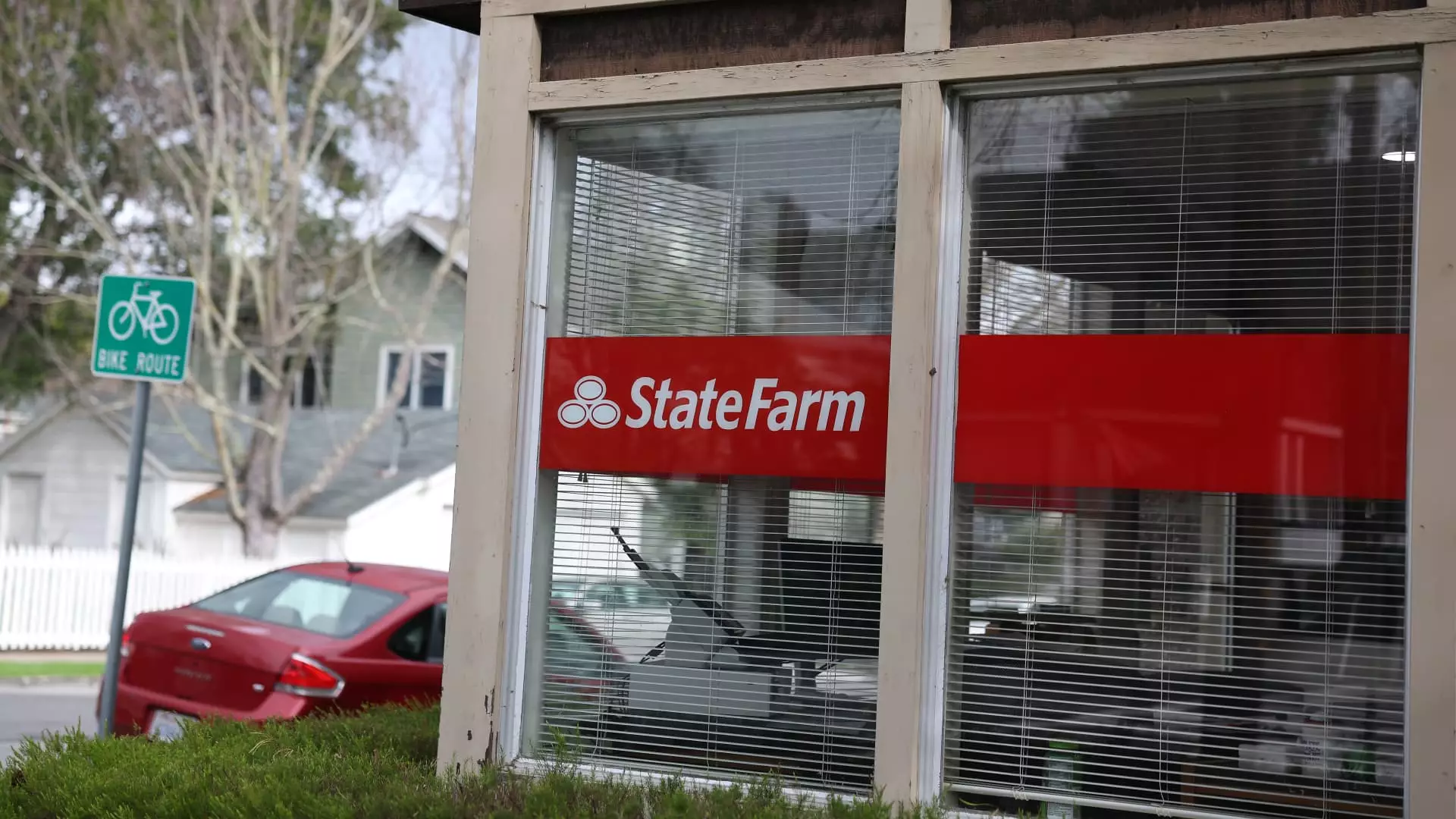State Farm is currently at a crossroads in California, facing the ramifications of its recent financial turmoil exacerbated by the devastating wildfires that scorched Los Angeles. The stakes could not be higher as the company pursues a drastic rate hike for homeowners, claiming it’s a necessary step to safeguard its financial health and stability. However, invoking the imagery of the Titanic, where an iceberg threatens to split the ship, presents an alarming metaphor for the currently unsustainable insurance landscape that could leave millions of Californians in dire need of coverage without sufficient options.
The recent fires in Los Angeles caused damage estimates reaching upwards of $275 billion, highlighting an unfortunate reality: California is on the front lines of climate change, and the associated risks are only expected to escalate. Yet, rather than addressing the root issues of rising natural disasters, State Farm seems to be leaning more towards raising rates rather than innovating their approach to risk assessment and management. This financial gamble raises a critical question: Is State Farm prioritizing its profits over the welfare of millions of residents?
A Band-Aid on a Gaping Wound
The insurance provider has sought an emergency rate increase of 17% from the California Public Utilities Commission. While ostensibly justified as necessary for maintaining financial stability, the shifting goalposts—initially proposing a 22% hike—cast doubt on the sincerity and consistency of State Farm’s claims. Consumer advocacy groups, such as Consumer Watchdog, have openly challenged these proposed increases, pointing out the lack of robust justification and transparency behind such drastic measures.
If we take a closer look at State Farm’s request, it becomes evident that the company is playing a dangerous game—not just with financial metrics, but with the fundamental needs of homeowners. The request encompasses a significant increase not only for homeowners but also for renter dwelling policies and renters, exacerbating the already tight housing market in California. What happens when insurance premiums rise while salaries stagnate? The risk of creating a population vulnerable to financial ruin is alarmingly high.
The True Cost of Inaction
California’s insurance landscape is complex, riddled with challenges that have progressively worsened over the years. Insurers have noted that claims and expenses outpace what they collect through premiums, forcing them to cut back on new policies or even refuse to renew existing ones. State Farm’s decision to halt new homeowners’ insurance policies in May 2023 symbolizes a frightening trend that could usher in an era of inadequacy, where millions of Californians find themselves without coverage or forced to seek policies with insufficient scope.
The idea of turning to the state’s “insurer of last resort,” the FAIR plan, raises concerns too, as this option has become burdened with escalating demand, lacking the capacity to handle a potential influx of clients. This desperately underscores a systemic crisis indicative of broader economic conditions in California’s insurance sector, where stability seems like an elusive dream rather than an attainable goal.
The Political Landscape and Regulatory Challenges
In an environment where the elected Insurance Commissioner Ricardo Lara has been hesitant to endorse significant rate increases, State Farm’s predicament stands out as a glaring flashpoint. The need for cautious regulatory oversight must be balanced with the necessity for insurers to remain financially viable. However, consumers can only hope that regulatory bodies will not simply follow the lead of insurers seeking immediate relief from their financial burdens at the expense of policyholders.
The current debate around insurance rates must also address larger issues of climate change and its effects on natural disasters. Real, actionable strategies are essential to mitigate risks and provide a sustainable insurance marketplace. It is not enough for companies like State Farm to simply adjust rates in response to financial hurdles—an integrated approach that considers environmental resilience alongside economic sustainability must become the standard.
Consumer Advocacy: The Need for Accountability
Consumer watchdog groups play a crucial role in preventing corporations from exploiting regulatory gaps as they pursue profit at the expense of their clients. The recent discussions not only highlight State Farm’s flawed approach but also raise questions about the effectiveness of current regulations designed to protect consumers.
As voices from Consumer Watchdog argue, the inconsistency in proposed rate increases indicates a lack of transparency that directly impacts California’s homeowners. Striking a balance between the need for insurance company stability and the right of consumers to affordable, adequate protection is imperative. Moreover, as economic pressures mount and natural disasters loom larger, reliance solely on traditional measures will not suffice.
State Farm’s request for increased rates in response to a financial crisis is not merely a matter of numbers on a balance sheet; it poses an existential threat to California homeowners and renters, pushing the limits of ethical behavior in corporate finance. The outcome of this scenario will reverberate across the state, setting precedents for how financial institutions navigate crises that are increasingly tied to environmental anguish.


Leave a Reply